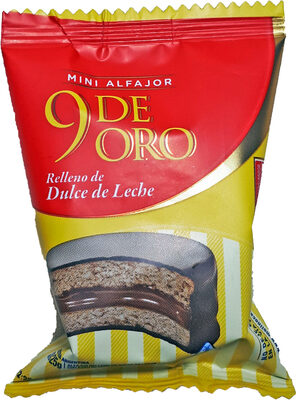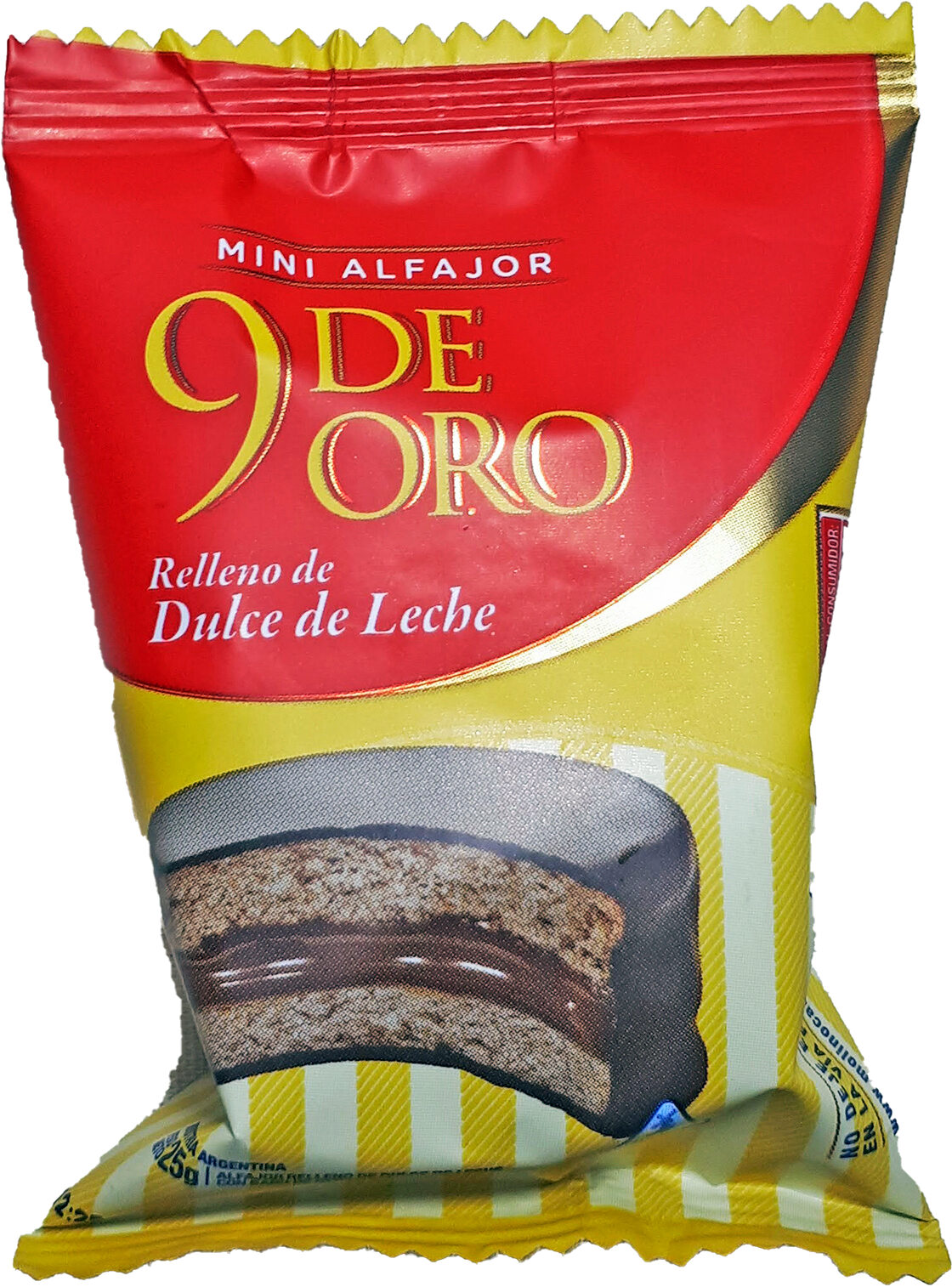Mini alfajor relleno de Dulce de leche - 9 de Oro - 25 g
This product page is not complete. You can help to complete it by editing it and adding more data from the photos we have, or by taking more photos using the app for Android or iPhone/iPad. Thank you!
×
Barcode: 7792180136695 (EAN / EAN-13)
Common name: Alfajor relleno con dulce de leche con baño de repostería. Tenor graso 15%
Quantity: 25 g
Brands: 9 de Oro, Molino Cañuelas
Categories: Snacks, Sweet snacks, Confectioneries, Festive foods, Christmas foods and drinks, Christmas sweets, Alfajores
Origin of ingredients: Argentina
Manufacturing or processing places: Argentina
Traceability code: RNE 04002387, RNPA 04071480
Countries where sold: Argentina, Bolivia, Chile, Paraguay, Spain, United States, Uruguay
Matching with your preferences
Environment
Packaging
Transportation
Report a problem
Data sources
Product added on by flipwared
Last edit of product page on by packbot.
Product page also edited by 5m4u9, tinchomaza6.











